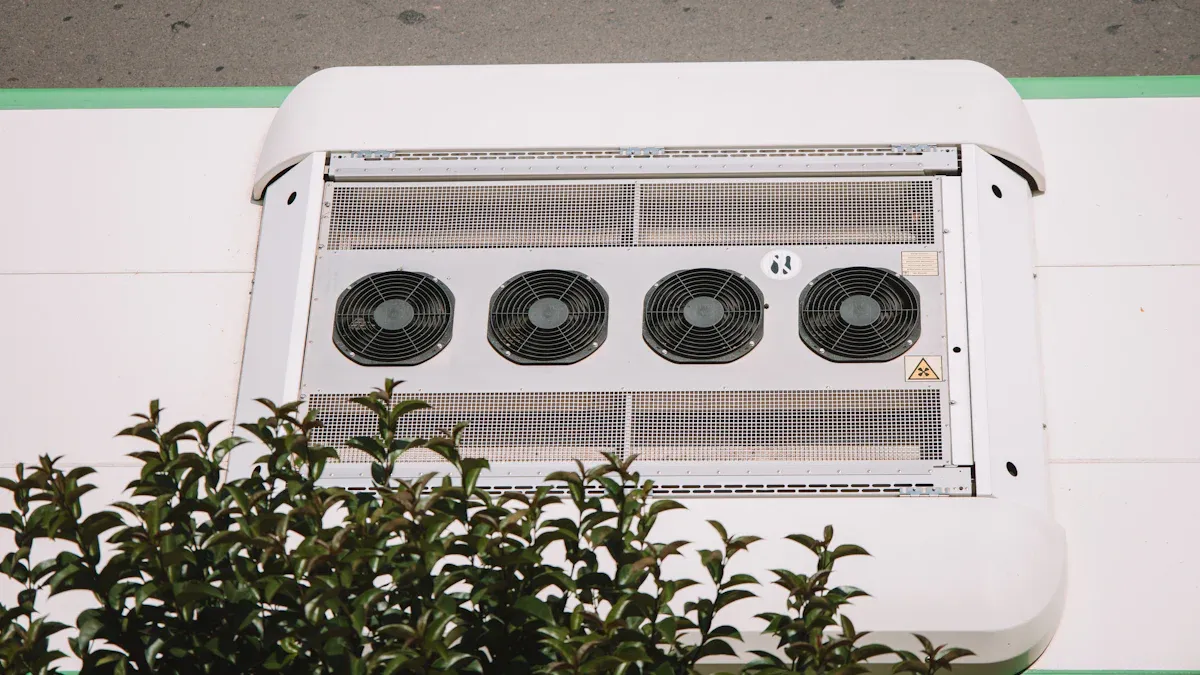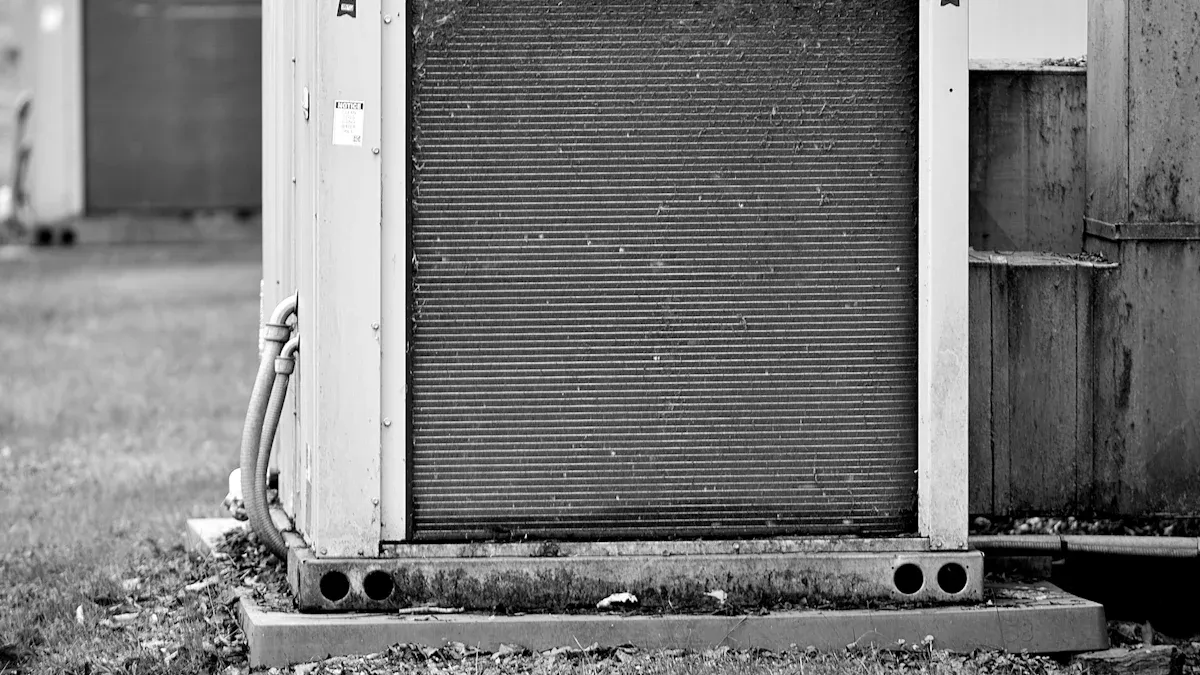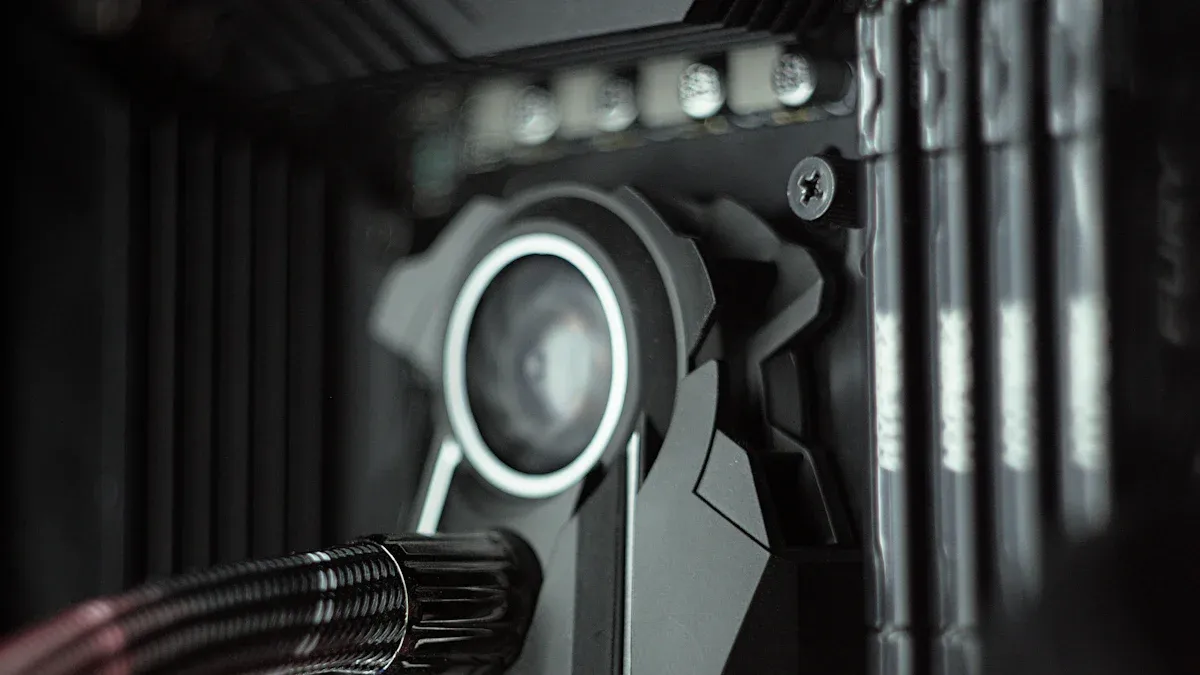
A defrosting heating element plays a critical role in refrigeration systems by preventing frost accumulation on evaporator coils. It generates controlled heat during defrost cycles to melt ice, ensuring optimal airflow and consistent cooling performance. In one study, a refrigerator equipped with a 475 W defrosting heating element improved energy efficiency by 8%, highlighting its contribution to system sustainability.
Key Takeaways
- Defrost heaters stop ice from forming on cooling coils. This helps the fridge cool well and use less energy.
- Taking care of defrost heaters often means fewer fixes are needed. It also helps the fridge last longer.
- Picking the correct defrost heater for your fridge improves how it works and saves energy.
What Is a Defrost Heating Element?

Definition and Function
A defrost heating element is a critical component in refrigeration systems. It prevents frost buildup on the evaporator coils by generating heat during the defrost cycle. This process ensures that the refrigeration system maintains optimal cooling performance and energy efficiency. Without this component, frost accumulation can obstruct airflow, reducing the system’s ability to cool effectively.
The defrost heating element works in conjunction with other components to perform its function. The following table outlines these components and their roles:
| Component | Function |
|---|---|
| Defrost Thermistor | Senses temperature and controls defrost cycles. |
| Defrost Heater | Heats the evaporator to melt ice, activated by the thermistor. |
| Thermal Fuse | Safety device to prevent overheating during defrosting. |
| Defrost Thermostat | Stops the defrost process when the coil is free of ice or reaches a set temperature. |
| Failsafe | Ensures defrosting stops after a maximum time to prevent malfunction. |
This collaborative system ensures that the defrosting heating element operates efficiently and safely, contributing to the overall reliability of the refrigeration unit.
Location in Refrigeration Systems
The defrost heating element is typically located near the evaporator coils inside the refrigeration system. These coils are responsible for absorbing heat from the interior of the refrigerator or freezer. Over time, frost can accumulate on the coils, hindering their ability to function. Placing the heating element close to the coils allows it to directly melt the frost during the defrost cycle.
In most residential refrigerators, the heating element is installed at the base or along the sides of the evaporator coils. In commercial refrigeration systems, the placement may vary depending on the design and size of the unit. Regardless of the location, the element’s proximity to the coils ensures effective frost removal.
Types of Defrost Heating Elements
Defrost heating elements come in various types, each designed to suit specific refrigeration systems. The most common types include:
- Calrod Heating Elements: These are durable and efficient, made from a metal sheath that encases a heating wire. They are commonly used in residential refrigerators.
- Wire Heating Elements: These consist of exposed wires that generate heat. They are often used in smaller refrigeration units or freezers.
- Glass Tube Heating Elements: These are encased in a glass tube for added protection and are typically found in commercial refrigeration systems.
Each type of defrost heating element is selected based on the system’s requirements, such as size, energy consumption, and operating conditions. Choosing the right type ensures optimal performance and longevity of the refrigeration unit.
How a Defrost Heating Element Works
The Defrost Cycle Process
The defrost cycle is an essential process in refrigeration systems that prevents frost accumulation on evaporator coils. During this cycle, the system temporarily halts its cooling operation and activates the defrosting heating element. This element generates heat to melt the frost, ensuring the coils remain unobstructed and capable of absorbing heat efficiently.
In heat pumps, the defrost cycle operates differently but serves a similar purpose. It reverses the heat pump’s operation to warm the outdoor unit and melt frost on the evaporator coil. This ensures the system can absorb heat from the outside air, even in cold weather. By maintaining clear coils, the defrost cycle supports consistent cooling performance and energy efficiency.
Melting Frost with Heat
The defrosting heating element plays a pivotal role in melting frost during the defrost cycle. Positioned near the evaporator coils, it emits controlled heat to break down ice and frost that accumulate over time. This process restores the coils’ ability to transfer heat effectively, preventing airflow obstructions and maintaining optimal cooling performance.
The heat generated by the element is carefully regulated to avoid overheating or damaging nearby components. Sensors, such as the defrost thermistor, monitor the temperature and ensure the heating element operates within safe limits. This precise control allows the refrigeration system to perform defrost cycles efficiently without compromising its structural integrity.
Integration with Refrigeration Components
The defrosting heating element integrates seamlessly with other refrigeration components to ensure smooth operation. Advanced systems, such as the intelliGen™ Refrigeration Controller, provide intelligent defrost control, automatically activating the heating element when frost buildup is detected. This controller also manages room temperature and superheat levels, enhancing overall system performance.
The integration extends to connectivity features, such as the intelliGen Webserver Card (iWC) and intelliGen Integration Card (iIC). These components enable local and remote monitoring of the refrigeration system and allow connectivity to Building Management Systems via BACnet or Modbus protocols. By eliminating redundant components like liquid-line solenoid valves and thermal expansion valves, these systems streamline operations and improve efficiency.
| Feature/Component | Description |
|---|---|
| intelliGen™ Refrigeration Controller | Provides automatic superheat, room temperature, and intelligent defrost control for refrigeration. |
| intelliGen Webserver Card (iWC) | Enables local and remote control and monitoring of the refrigeration system. |
| intelliGen Integration Card (iIC) | Allows connectivity to Building Management systems via BACnet or Modbus. |
| Eliminated Components | Includes liquid-line solenoid valve, room thermostat, thermal expansion valve, and more. |
This integration ensures the defrosting heating element operates efficiently while contributing to the overall reliability and longevity of the refrigeration system.
Benefits of Defrost Heating Elements
Enhanced Cooling Efficiency
Defrost heating elements significantly improve the cooling efficiency of refrigeration systems. By eliminating frost buildup on evaporator coils, they ensure unobstructed airflow and optimal heat transfer. This process allows the system to maintain consistent cooling performance without overworking its components.
Efficiency metrics highlight the impact of defrost heating elements on system performance. For instance, a Seasonal Energy Efficiency Ratio (SEER) of 16 indicates that the system removes 16,000 British thermal units (Btu) of heat for every kilowatt-hour (kWh) consumed. Similarly, a Heating Seasonal Performance Factor (HSPF) of 10.3 demonstrates that the system provides 10,300 Btu of heat per kWh. These metrics underscore the role of defrost heating elements in achieving energy-efficient operation.
| Metric Type | Description | Example Value |
|---|---|---|
| Heating Efficiency (HSPF) | Measures total heat provided over a heating season divided by energy consumed. | 10.3 HSPF |
| Cooling Efficiency (SEER) | Measures total heat removed over a cooling season divided by energy consumed. | 16 SEER |
Reduced Maintenance Needs
Defrost heating elements minimize the need for frequent maintenance by preventing frost accumulation. Frost can obstruct airflow and strain the refrigeration system, leading to higher energy consumption and potential damage. By melting frost during defrost cycles, these elements reduce wear and tear on critical components.
Systems equipped with defrost heating elements require fewer manual defrosting interventions. This feature saves time and reduces operational costs for both residential and commercial users. Additionally, automated defrost cycles ensure consistent performance, eliminating the risk of prolonged frost-related issues.
Extended Equipment Lifespan
Defrost heating elements contribute to the longevity of refrigeration systems. By maintaining clear evaporator coils, they prevent the mechanical stress caused by frost buildup. This proactive approach reduces the likelihood of component failure and extends the overall lifespan of the equipment.
Regular defrost cycles also protect sensitive parts, such as compressors and fans, from excessive strain. This protection ensures that the system operates efficiently over time, reducing the need for costly repairs or replacements. The integration of advanced defrosting technologies further enhances durability, making refrigeration systems more reliable and sustainable.
Troubleshooting Defrost Heating Elements

Identifying Common Issues
Defrost heating elements can encounter several problems that disrupt their functionality. Common issues include failure to generate heat, uneven defrosting, or complete system shutdown during the defrost cycle. These problems often stem from faulty wiring, damaged components, or sensor malfunctions.
To identify these issues, technicians should follow a systematic approach:
- Evaluate the outdoor unit for snow, ice, or debris that may obstruct airflow.
- Inspect the evaporator coils for ice buildup, which could indicate refrigerant flow problems.
- Check refrigerant lines for leaks or damage, as these can impair heat transfer and prevent effective defrosting.
Addressing these areas helps pinpoint the root cause of the malfunction and ensures the defrosting heating element operates efficiently.
Testing and Diagnosing Problems
Diagnosing a malfunctioning defrost heating element requires careful testing. Technicians often begin by visually inspecting the element for physical damage, such as burns or breaks. Using a multimeter, they can measure the element’s resistance to determine if it is functioning correctly. A reading outside the manufacturer’s specified range typically indicates a fault.
The defrost thermostat and thermistor should also be tested. These components regulate the defrost cycle and ensure the element activates at the correct time. If either component fails, the system may not defrost properly. By systematically testing each part, technicians can isolate the issue and recommend appropriate repairs.
Repairing or Replacing the Element
When a defrost heating element is damaged beyond repair, replacement becomes necessary. Before replacing the element, technicians must disconnect the power supply to ensure safety. The faulty element is then removed, and a compatible replacement is installed. Proper installation ensures the new element integrates seamlessly with the system’s components.
In some cases, minor issues like loose connections or faulty wiring can be repaired without replacing the element. Regular maintenance and timely repairs extend the lifespan of the defrosting heating element and improve the overall reliability of the refrigeration system.
Defrosting heating elements play a vital role in refrigeration systems by preventing frost buildup and ensuring consistent cooling performance. Regular maintenance and timely troubleshooting enhance their efficiency and extend equipment lifespan. The following table highlights key practices that improve system durability and performance:
| Practice | Benefit |
|---|---|
| Anti-corrosion coatings | Protects components, reducing wear and extending lifespan. |
| Demand-based defrost cycles | Optimizes energy use, improving overall system efficiency. |
| Regular maintenance | Prevents coil damage caused by frequent defrost cycles. |
By integrating these practices, refrigeration systems operate more efficiently and last longer, reducing costs and environmental impact.
FAQ
What happens if a defrost heating element fails?
A failed defrost heating element causes frost buildup on evaporator coils. This reduces cooling efficiency and may lead to system overheating or component damage.
How often should defrost heating elements be inspected?
Technicians should inspect defrost heating elements during routine maintenance, typically every six months. Regular checks ensure optimal performance and prevent unexpected failures.
Can a defrost heating element be repaired instead of replaced?
Minor issues like loose connections can be repaired. However, damaged or burned-out elements usually require replacement to restore proper functionality.
Post time: May-29-2025




